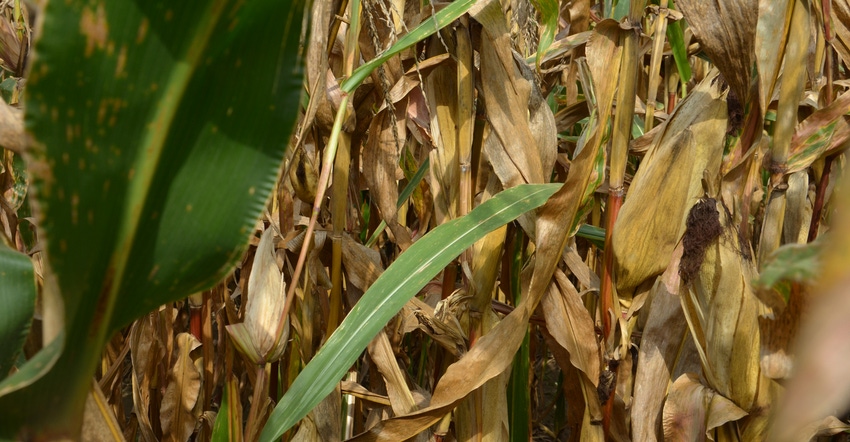November 28, 2017

Every year is different. We can learn new things in every growing season. They may be new concepts or just reaffirmations of old ideas that hold true. Tom Bechman, editor of Indiana Prairie Farmer, and I scouted a cornfield in the central Corn Belt almost every two weeks last year, depending on the weather conditions, from seedling emergence to harvest as part of the Corn Watch ’17 project.
In some spots, we almost started to know some of those plants “personally.” We even had to take liberties with some of them to find out why they were sick, what diseases were bothering them or what insects were bugging them. We removed leaves or ears to study the effects. We examined their behavior toward their neighbors and how they reacted to late-comers. We also observed what happened when 6 inches of water was dumped on them in one day, and later when it turned too dry!
We were able to compare two hybrids that were planted side by side in strips of 24 rows each throughout an 80-acre field by the Corn Watch ’17 grower, who was a very good cooperator.
7 key lessons
Here are some things we learned about growing corn from the 2017 season.
1. There can be tough realities with early planting. I’m a strong proponent of early planting, provided the seedbed is in good condition. Fortunately, our cooperator is also a firm believer in early planting. The field was planted April 20, and Mother Nature had different plans for that day. It poured hard right after the field was planted.
I wouldn’t change anything except I would pay more attention to the weather forecast at planting time in the future. As one of my friends says, “We should not forget, Mother Nature is the boss!”
The grower decided to replant in spots with thin stands, and one small area had to be planted three times.
2. If you’re going to plant early, have a good seed rep. Make sure you have a good seed company to supply you with additional seed at no cost in case you must replant. You need a seed rep ready to meet your needs when you’re planting crops.
3. Make sure hybrids planted early have good seedling vigor. Early stand establishment is very important for a successful crop. Make sure most plants emerge at about the same time. Depth of planting must be very uniform for good emergence.
Plants that emerge even one to two days later act more like weeds and hurt yield rather than help. They’re worse than weeds because corn herbicides can’t kill them.
4. Plant spacing is important. Plants that are too close together end up producing nubbins. They may even go barren.
5. Make sure hybrids have tolerance to diseases and insects. Corn borers are alive and well. One hybrid did not have the Bt corn borer trait. We learned that the Bt trait for corn borer tolerance really works well.
6. There are no perfect hybrids. Most hybrids have pluses and minuses. Compare more than yield before tossing out a hybrid. Identify strong and weak points of each hybrid. Take time to compare characteristics.
7. Try to evaluate all hybrids grown on your farm. Each year, replace the bottom third of hybrids with new hybrids.
Nanda is president of Agronomic Crops Consultants LLC. Email [email protected], or call 317-910-9876.
About the Author(s)
You May Also Like






